
The four members of art collective CFGNY pose in their Milan exhibition Emporium. From left to right: Ten Izu, Daniel Chew, Tin Nguyen (seated), and Kirsten Kilponen. Portrait by Elle Pérez.

The four members of art collective CFGNY pose in their Milan exhibition Emporium. From left to right: Ten Izu, Daniel Chew, Tin Nguyen (seated), and Kirsten Kilponen. Portrait by Elle Pérez.
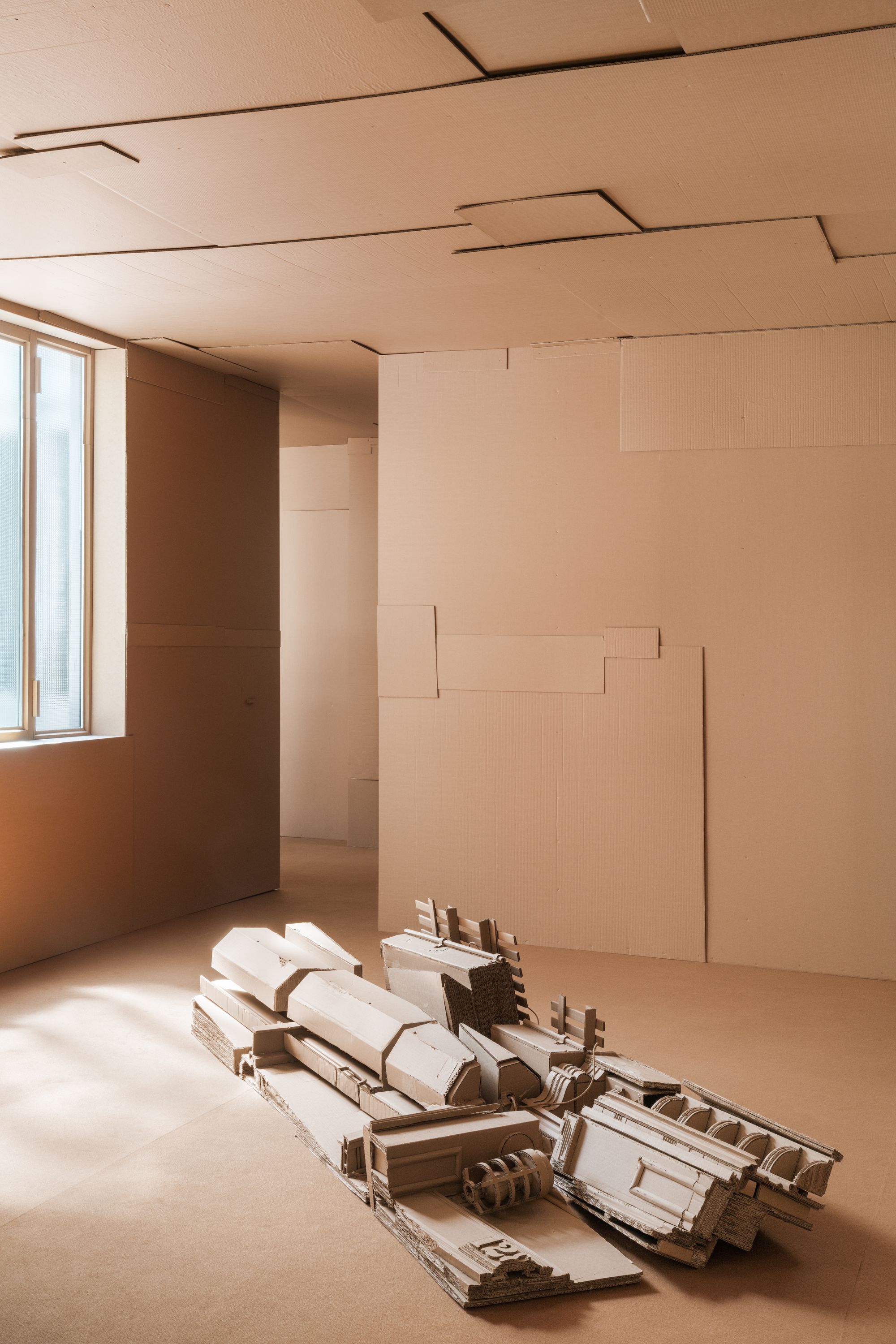
View of the exhibition architecture of Emporium. Photography by Delfino Sisto Legnani.
CFGNY describe themselves as “artists who make clothes.” Drawn to fashion for its ability to convene community, Daniel Chew and Tin Nguyen founded their New York-based brand in 2016 and were joined a few years later by Ten Izu and Kirsten Kilponen. The resulting fashion-label-cum-art-collective has created not only garments, but performance, video, photography, sculpture, and installation in a multimedia practice that complicates their concept of “vaguely Asian” — the plurality and unfixity of global Asianness and its aesthetic manifestations. Since their 2017 public début — a runway presentation in lower Manhattan’s 47 Canal Gallery — CFGNY have performed and exhibited at venues around the world, including the Stedelijk Museum in Amsterdam, Bel Ami in Los Angeles, Japan Society in New York, Auto Italia in London, X Museum in Beijing, and the RISD Museum in Providence.
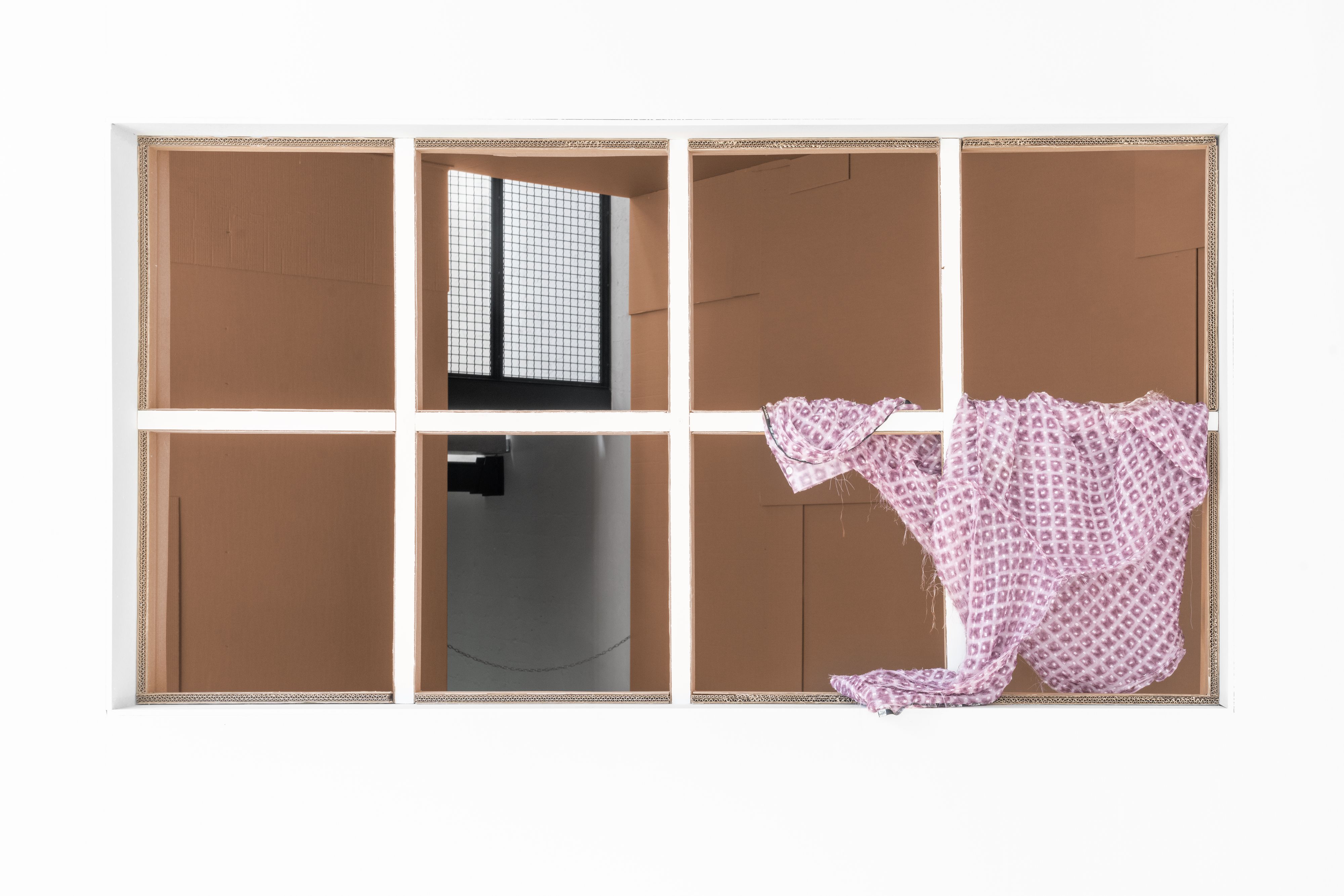
View of the exhibition architecture of Emporium. Photography by Delfino Sisto Legnani.
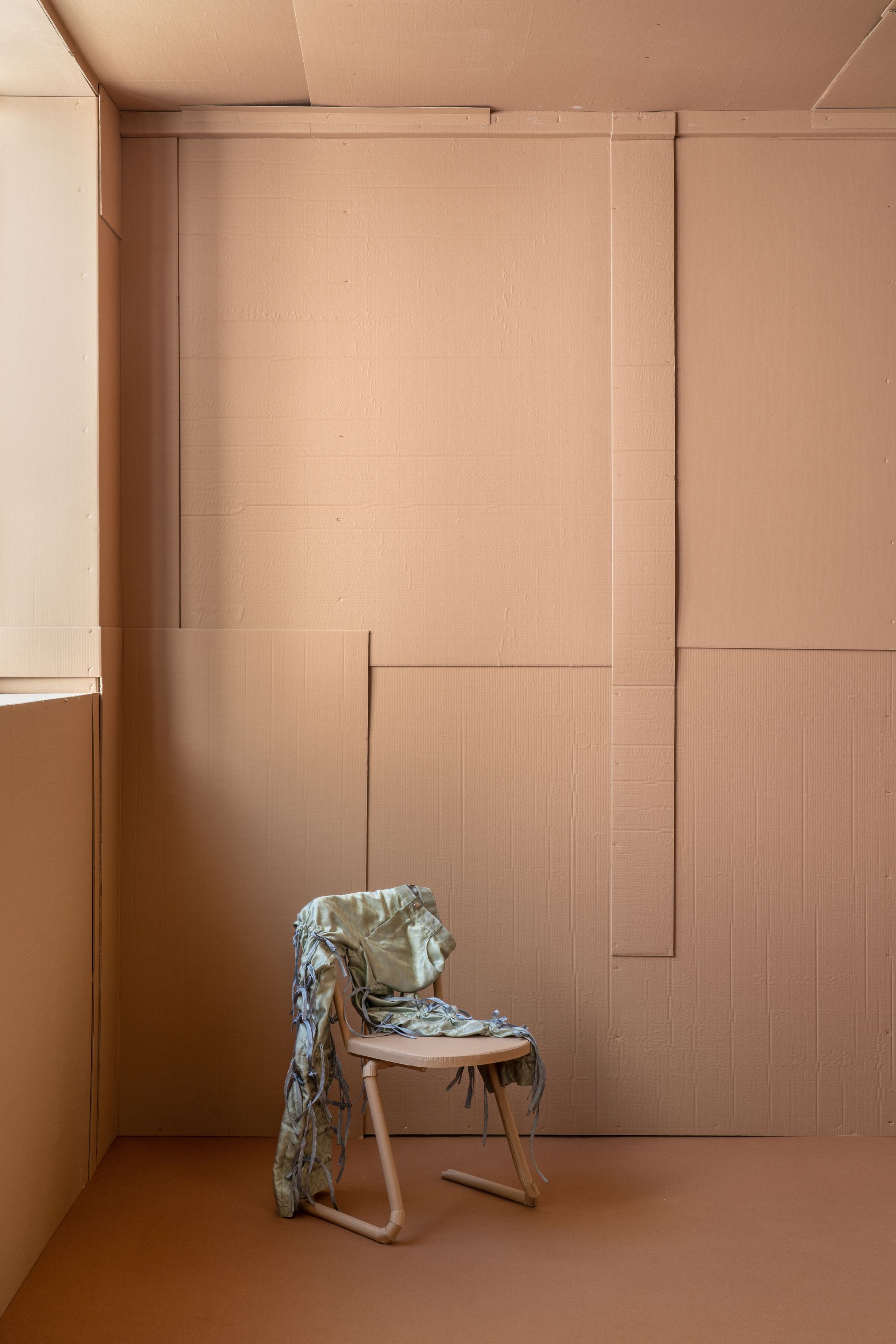
Cardboard runs throughout CFGNY’s oeuvre, showing up as architecture, runway, and sculpture. For Emporium, CFGNY uses the material to cover the floor, walls, and ceiling. Photography by Delfino Sisto Legnani.
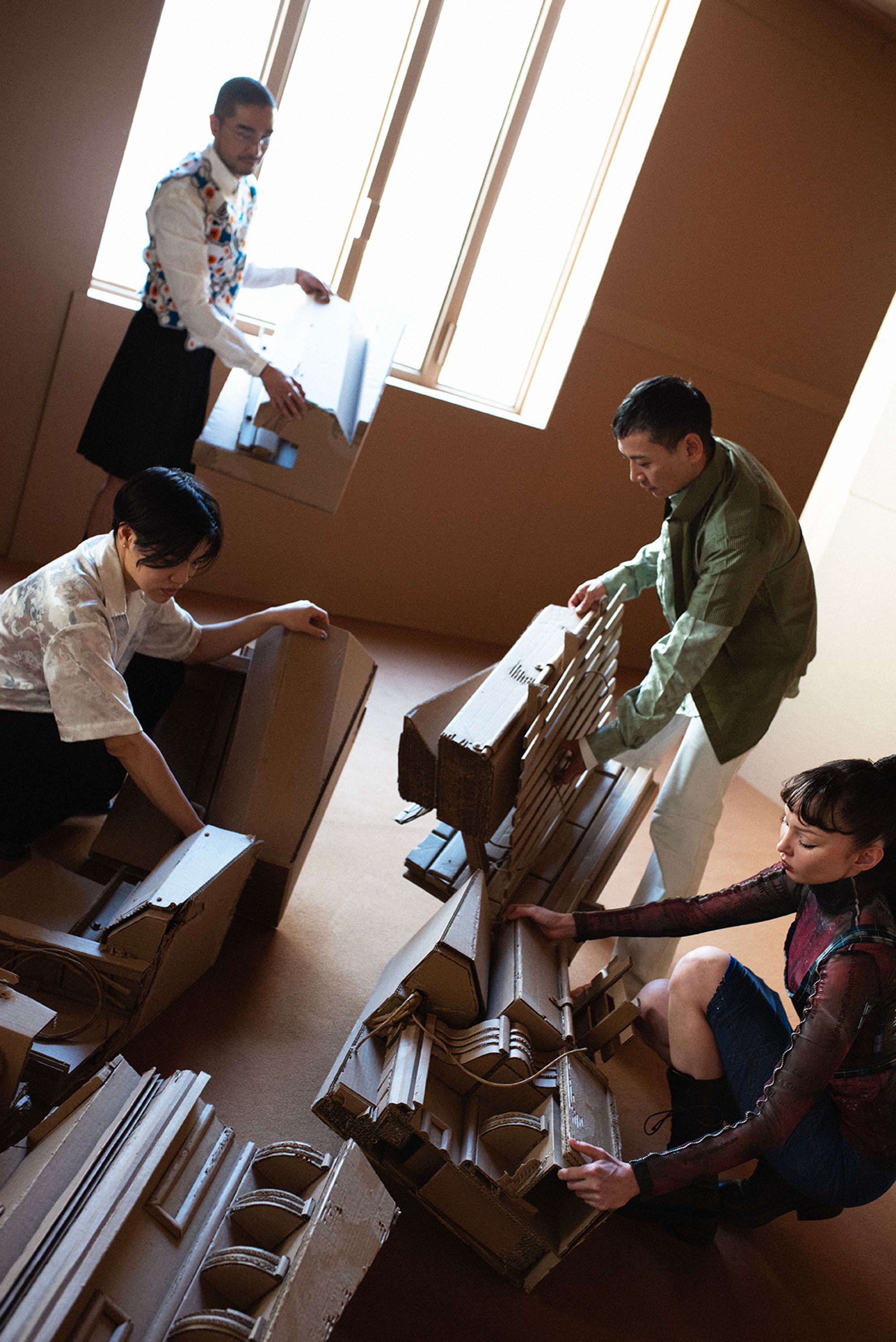
“Our interest in cardboard stems from its universal nature and its function as a literal skin and container for the commodities that are imported and exported around the world,” says the group. Portrait by Elle Pérez.

Eight cardboard sculptures reference the vernacular architecture of New York’s Chinatown, where different construction elements have been cobbled together and encrusted on top of each other by generations of inhabitants. Photography by Delfino Sisto Legnani.
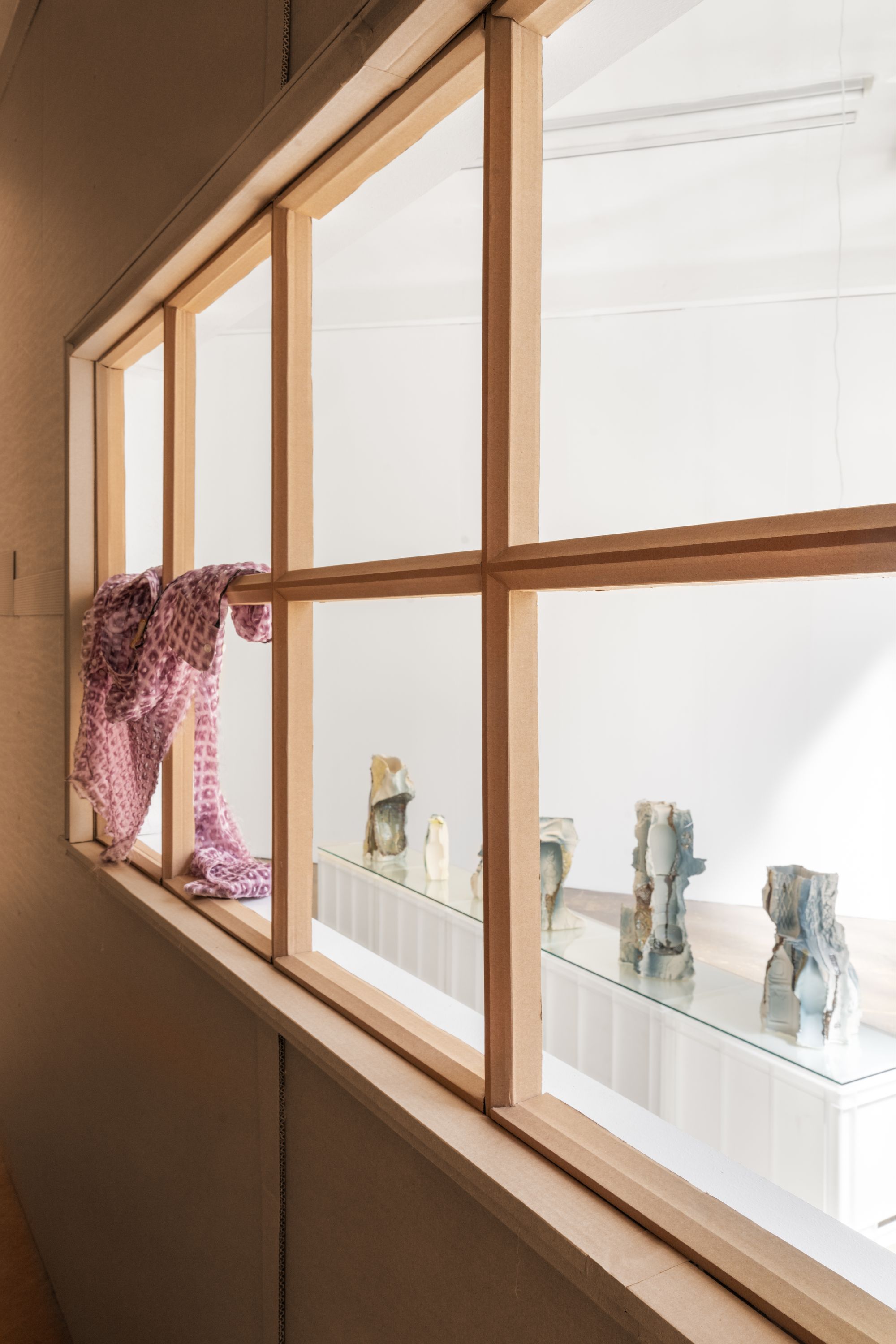
View of the exhibition architecture of Emporium. Photography by Delfino Sisto Legnani.
Emporium, their recent show in Milan commissioned by PIN–UP and leather accessories brand Marsèll, was on view April 17–May 11, 2023 at Marsèll’s Milan exhibition space. It’s the collective’s first show in Italy, and CFGNY dove right into the layered relationship between that country and Asia. “We kept returning to the fact that Marsèll’s first international market is China,” explain the group, who prefer to answer questions collectively (“Sometimes there’s a joy to not being seen as an individual,” says Chew). With this jumping off point, they could consider how Europe and European luxury goods function within “the imaginary of Asia.” Such authorial displacement is a frequent sleight of hand for CFGNY, who in the past have asked Ho Chi Minh City tailors to reflect their own aesthetic back at them in clothing collections, commissioned Vietnamese wedding-photo studios to work off location, and even cast lookalike models for a runway-performance in Berlin that sowed confusion while displacing the idea of an authentic self.
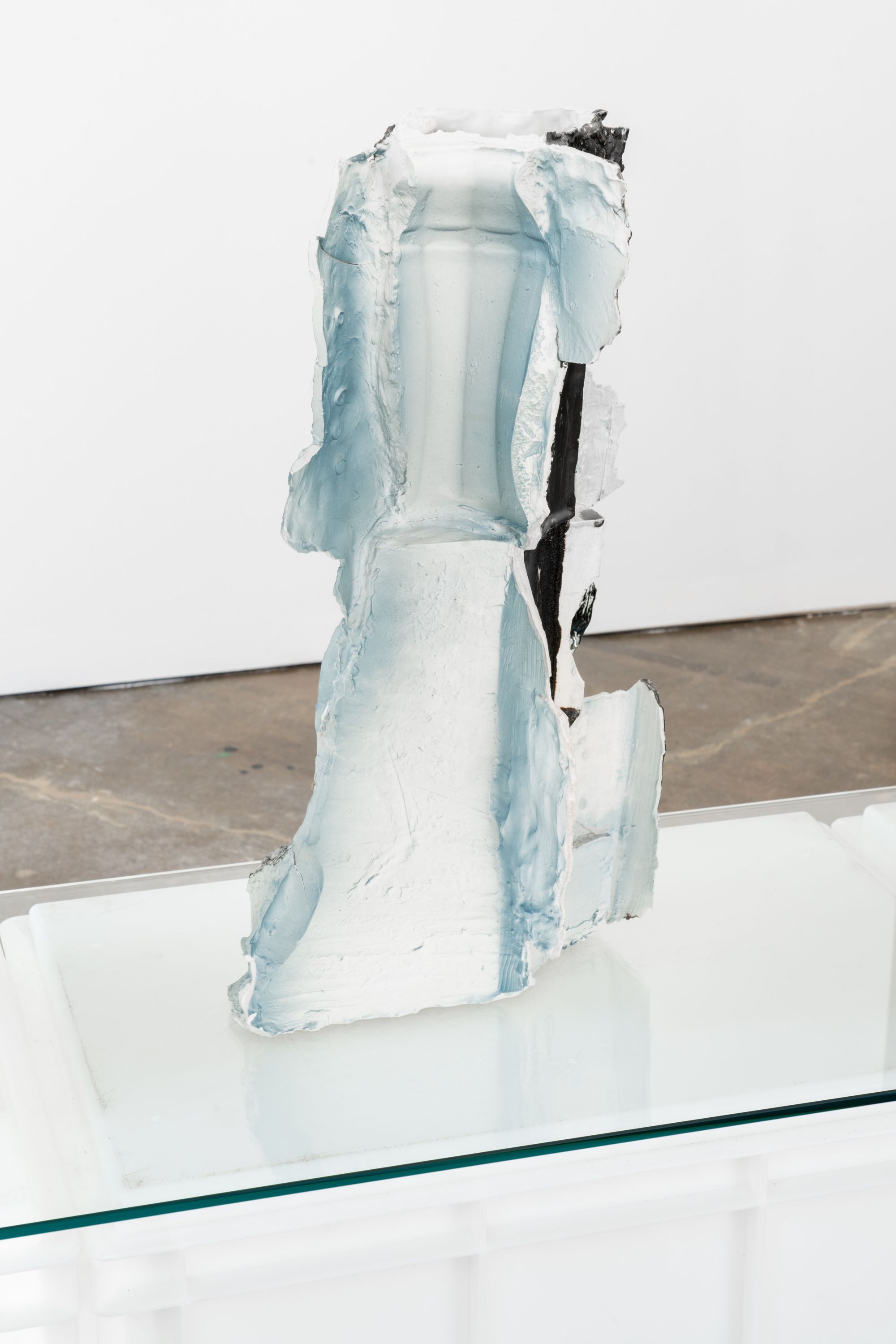
CFGNY’s porcelain sculptures toy with Europe’s vision of finery that was itself bootlegged from Chinese craft, revealing the fault lines in porcelain’s fragile history. Photography by Delfino Sisto Legnani.
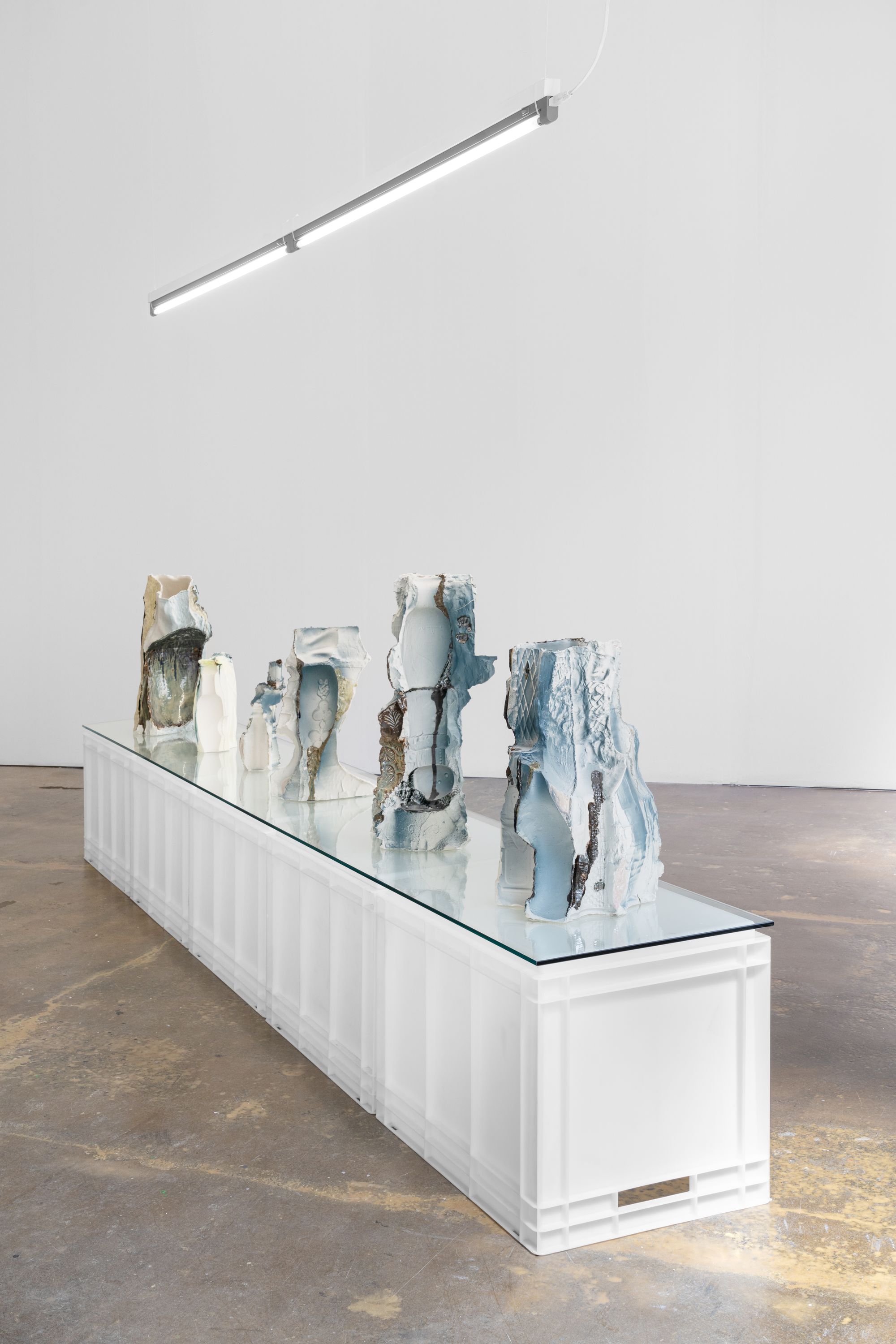
Installation view of Emporium. Photography by Delfino Sisto Legnani.
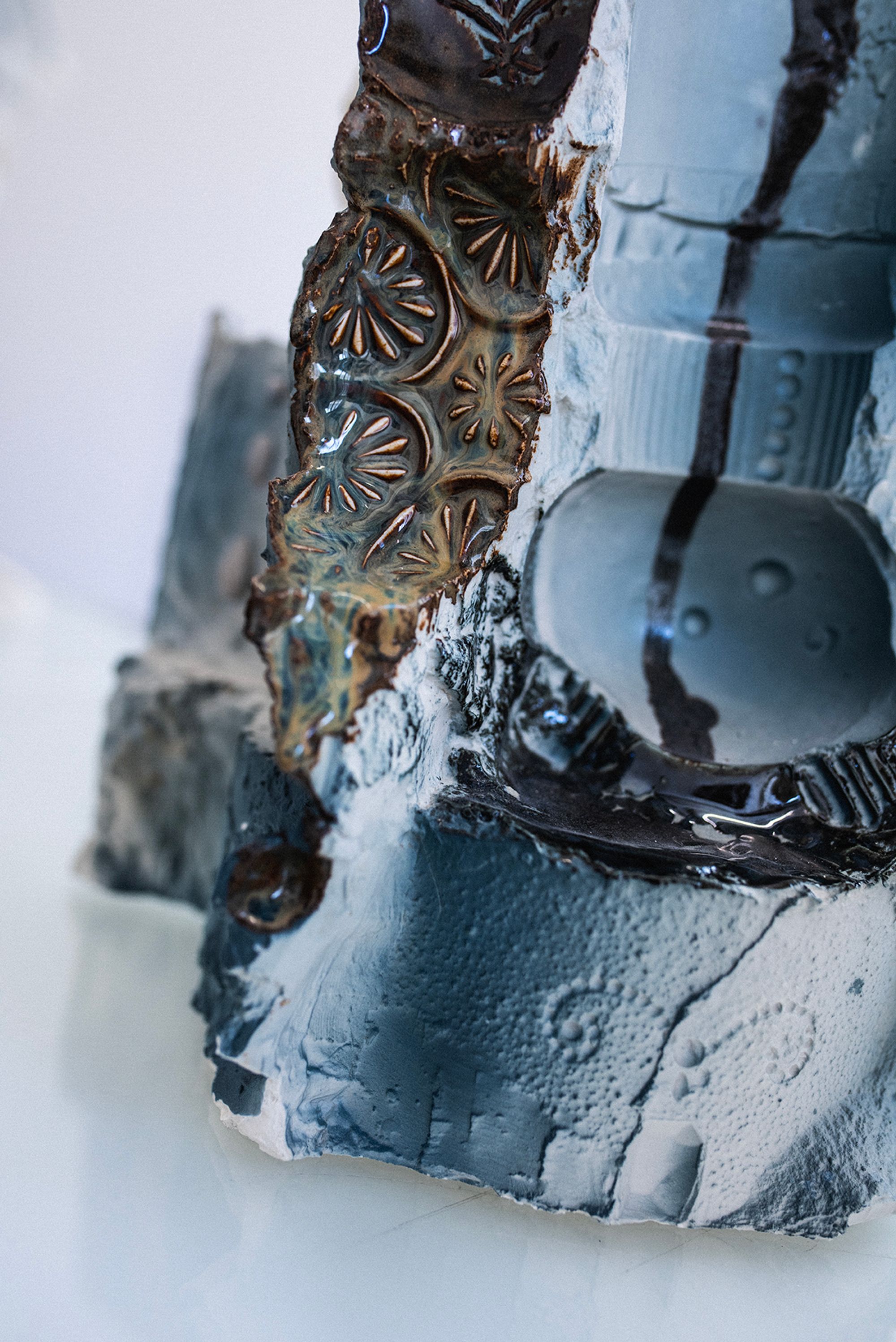
Made by casting discarded consumer objects like blouses, bottles, and existing vases, CFGNY’s porcelain casts reimagine the formal language of historic vessels’ rarified forms. Photography by Delfino Sisto Legnani.
CFGNY, Fashion Max 2, 2023; a runway-performance in conjunction with Refashioning: CFGNY & Wataru Tominaga, curated by Tiffany Lambert. Filmed on January 28th, 2023
In their exhibitions, CFGNY frequently interweave their fashion work with site-specific interventions that reference each context’s historic and architectural framework. For Emporium, the foursome constructed a “patchwork” installation, echoing their frequent use of competing patterns and mixes of “high” and “low” materials to make bold gestures. Their porcelain sculptures, previously shown at Japan Society, were molded from disused garments, bottles, and other detritus, while the cornices and window fragments were specced directly from different locations in Milan, and then covered in leather by Marsèll’s artisans. “We were excited to produce leather sculptures with Marsèll’s craftspeople, who take pride in making all their products using traditional techniques that have been abandoned by most other Italian companies,” explains the collective. Another material language they used at Emporium is cardboard, which runs throughout CFGNY’s oeuvre, showing up as architecture, runway, sculpture, and environment; in Milan it covered the floor, walls, and ceiling, a reference to vernacular architecture in New York’s Chinatown, where different construction elements have been cobbled together and encrusted on top of each other by generations of inhabitants. “Our interest in cardboard stems from its universal nature and its function as a literal skin and container for the commodities that are imported and exported around the world,” say the group.

The cornices and window fragments in the exhibition were specced directly from different locations in Milan’s Chinatown in Via Paolo Sarpi, and then covered in leather by Marsèll’s craftspeople in Veneto. Photography by Delfino Sisto Legnani.
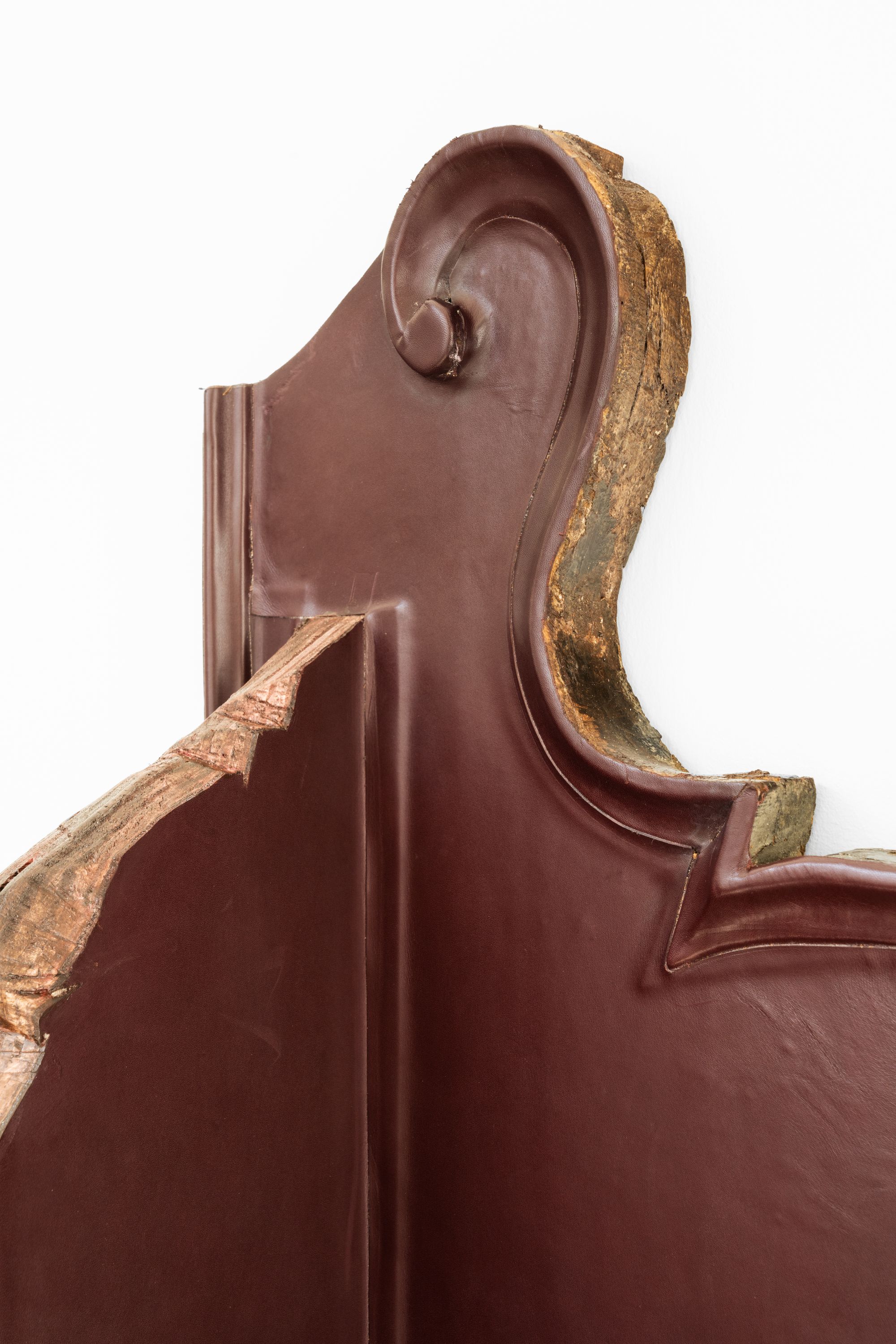
Italian leather has been marketed as a luxury commodity. These inter-continental trade relationships bolster a cultural imaginary where in many Asian consumer cultures, Italian products represent the essential vision of “luxury.” Photography by Delfino Sisto Legnani.

CFGNY turned these leather-clad architectural fragments into mirrors of not only the only the circulation of luxury goods, but of people and ideas. Photography by Delfino Sisto Legnani.
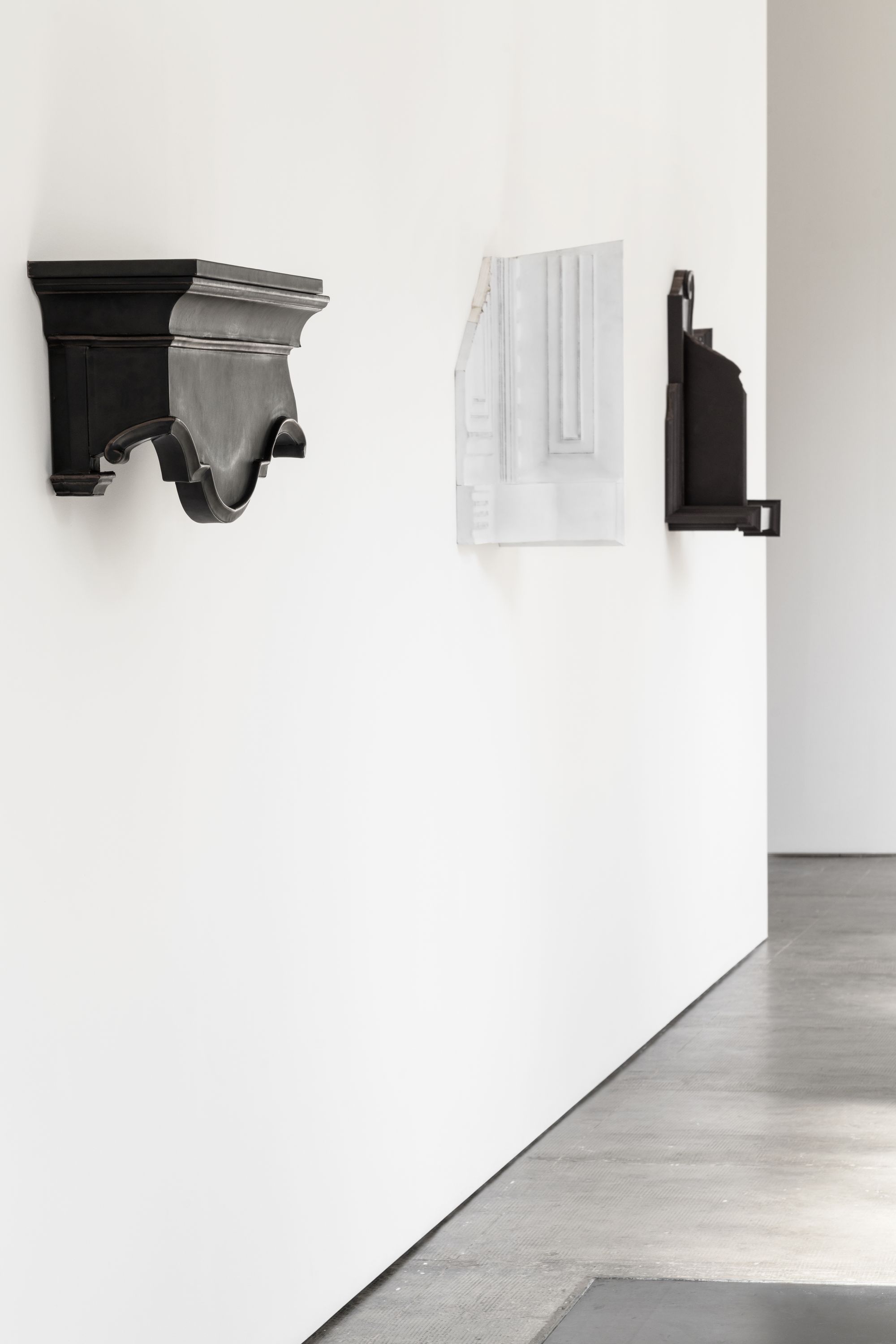
“We were excited to produce leather sculptures with Marsèll’s craftspeople, who take pride in making all their products using traditional techniques that have been abandoned by most other Italian companies,” explain CFGNY. Photography by Delfino Sisto Legnani.

The wallpaper is part of a 2017 photo series CFGNY produced with a wedding studio in Ho Chi Minh City, Vietnam. Showcasing pieces from CFGNY’s ongoing fashion archive, models pose in front of environments of general “European” architecture often used as aspirational or romantic backdrops.
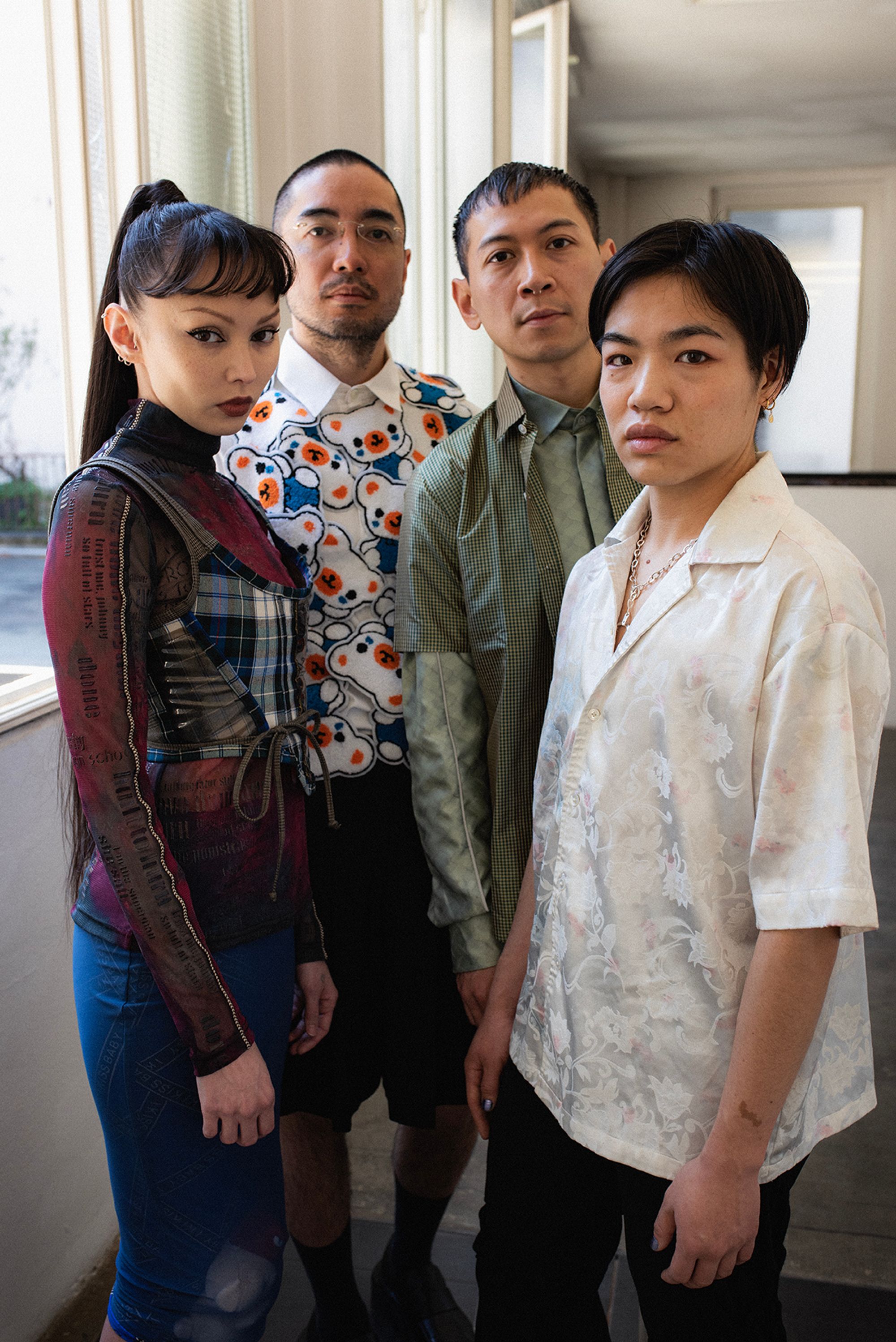
From left to right: Kirsten Kilponen, Daniel Chew, Tin Nguyen, and Ten Izu. Portrait by Elle Pérez.
“What draws me to CFGNY’s work is the way they seamlessly operate in the gray zone between fashion, art, and architecture,” says Felix Burrichter, PIN–UP’s founder and creative director, who curated the exhibition for Marsèll. “The title Emporium is a perfect example in the way it implies a survey show, combining aspects of previous CFGNY exhibitions, but also references the idea of different global economic and political ‘empires’ throughout history, while playing with clichés of luxury diffusion lines.” By deploying fashion as a research medium, CFGNY un- and re-tangle the networks of objects and bodies mediated through materials and commerce, pointing out the constructedness and instability of national and racial identities. In similarity and in difference, they find sites for solidarity. On or off bodies, garments — which they describe as sorts of “readymades” — are a cipher. “Our primary interest in clothing is the relational aspect of wearing garments and the aesthetic communities formed by them,” they say. “Using fashion as a medium, we are able to extend our project into conversations beyond the art and fashion worlds.”
Video by The Circumstances for PIN–UP.
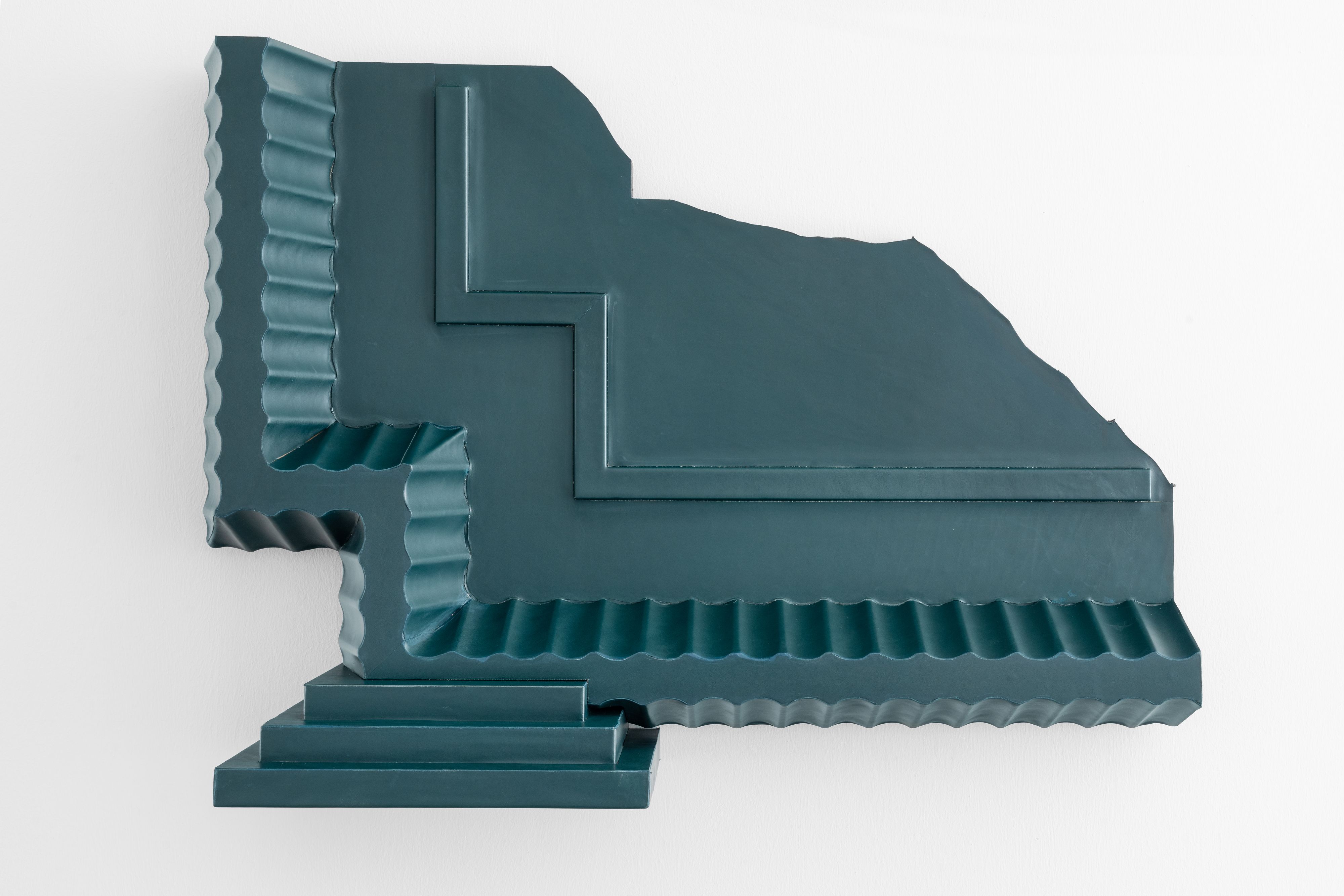
Detail of a leather-clad architectural fragment by CFGNY in collaboration with Marsèll artisans. Photography by Delfino Sisto Legnani.